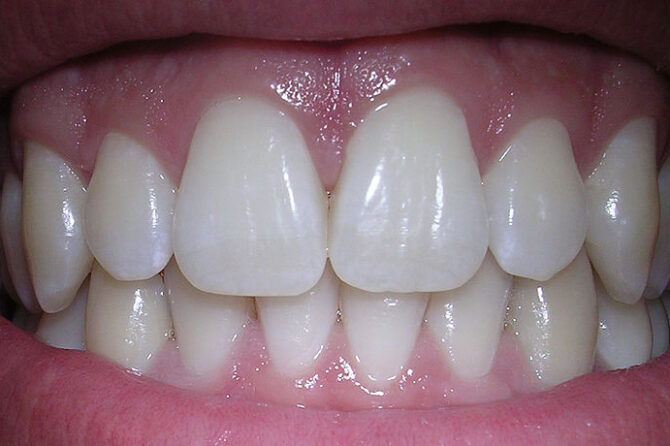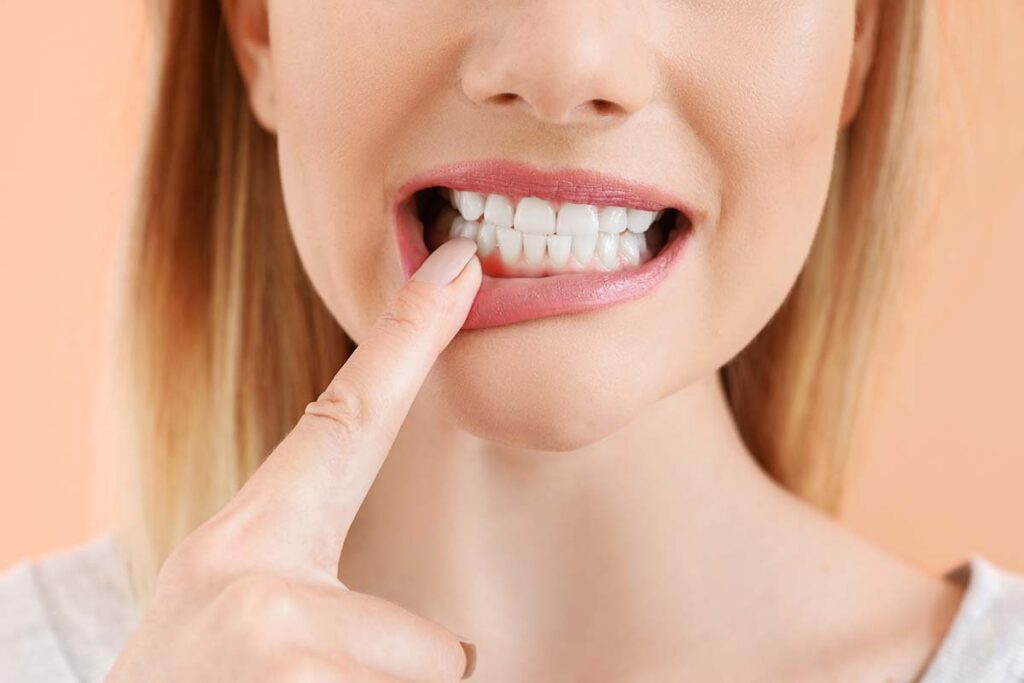
What You Need To Know About Gum Recession & can Waterpik Cause Gum Recession
Waterpik Cause Gum Recession
Gum recession is a common dental issue that is often overlooked. It occurs when the gum tissue around the teeth wears away, resulting in exposed roots and an uneven gum line. This can be very concerning, as it is associated with numerous oral health concerns like bad breath, root sensitivity, cavities, and tooth loss. Many people are unaware of the various factors that can cause gum recession, and whether regular use of a waterpik can have a negative effect on their gums. Before delving into the topic of gum recession, it’s important to understand why the Target Search Terms (can waterpik cause gum recession) are important. With the increasing prevalence of at-home oral health care devices such as waterpiks, it is essential to have an understanding of how these devices can affect one’s oral hygiene, particularly when it comes to Waterpik Cause gum recession. Thankfully, research about gum recession and its potential causes is available and can be used to help inform our understanding of this condition and the role a waterpik may play in causing or exacerbating it. In this guide, we will discuss the effects of waterpik use on gum recession, as well as how to prevent and address it properly. Gum recession can sound intimidating, but it’s actually a relatively common dental issue. It’s defined as the process of gums receding away from teeth, which can leave roots exposed if left untreated. It’s usually caused by poor oral hygiene habits or even genetics, and can have an effect on the entire mouth. In order to understand gum recession, we need to first understand the structure of our gums. Each tooth is surrounded by a pink band of tissue made of fibres and muscles known as the gingiva. The gingiva is designed to protect our teeth’s roots and hold them in place. When the gingiva starts to recede from the teeth, the roots are then exposed to more bacteria and other harmful substances that can cause infection or even damage to the root. Gum recession can be uncomfortable and even painful, but it’s important to note that it’s treatable. Knowing the warning signs and taking preventative measures as soon as possible is key to avoiding gum recession and its various repercussions. We’ll discuss the causes and signs of gum recession in the next section. Gum recession is a common problem that affects many people. It happens when the gum tissue that surrounds your teeth begins to recede, which can eventually lead to tooth loss. There are several causes of gum recession other than waterpik use, such as inflammation, hormones, genetics, and manual trauma. Inflammation can be caused by a number of things, including bacteria in the mouth, plaque buildup, or chronic illnesses like diabetes and lupus. Hormonal changes, such as those that occur during pregnancy, puberty, or menopause can also affect the gums. Genetics may also play a part, with certain genetic predispositions making people more likely to develop gum recession. Finally, manual trauma, such as brushing your teeth too hard or using dental tools incorrectly, can cause the Waterpik Cause gum tissue to recede. By understanding the different causes of gum recession, you can take steps to reduce your risk and keep your gums healthy.
Exploring the Connection Between Waterpik cause Gum Recession
Gum recession is a visible sign that the gums have become weakened, causing them to pull back away from the teeth. This can cause serious problems for your oral health if left untreated. It’s important to understand the connection between waterpik use and gum recession, so you can make an informed decision about how to look after your teeth and gums.
When used correctly, a waterpik can be a great way to keep your gums healthy. However, the water pressure applied to the gums and the length of time using the waterpik can be factors in causing gum recession. It’s important to consider both when looking at the risks of using a waterpik, as too much pressure or using it for too long can irritate the gums, causing them to recede.
It’s possible that the wrong type of waterpik, or one with settings that are too high, could contribute to gum recession. That’s why it’s important to speak to your dentist before making any decisions about your oral health care.
Gum recession is an uncomfortable condition that can cause pain and sensitivity due to the exposure of the root of the tooth. Many people are curious to know if using a waterpik to clean their teeth could be a contributing factor. To answer this question, it’s important to explore existing research on the subject. Studies in som eof the most respected dental journals have weighed in on the effects of waterpik use on gum recession. A study conducted in 2018 and published in the Journal of Oral Hygiene and Health found that while waterpik use has positive effects on plaque reduction and gum health, there was no evidence found linking waterpik use with gum recession. Another study, published in the Journal of Clinical Medical Research, concluded that while waterpik use is an effective way to reduce bacteria levels in the mouth, it did not directly contribute to gum recession. The study analyzed 95 individuals who used a waterpik at least once daily, and found that their average gum recession rate was not significantly greater than those who did not use a waterpik. While these studies do not provide conclusive evidence that waterpik use does not cause gum recession, they do offer reassuring reassurance for people looking to include waterpik use as part of their oral hygiene routine.
Testimonials: The Personal Touch
When it comes to understanding the effects of a waterpik on gum recession, there is no substitute for personal stories. Patients who have used a waterpik and experienced gum recession can provide valuable insight into the cause and effects. By listening to their experiences, we can find out more about how the use of a waterpik might affect our own dental health.
One patient, who had used a waterpik for several years, spoke to us about her experience with gum recession. She noted that she began to experience gum recession after using her waterpik for an extended period, and that the gum line had receded significantly. She attributed this to the pressure of the water coming in contact with her gums.
Another patient noted that she had experienced gum recession without ever using a waterpik. However, after she began using the device regularly, her gum recession became worse. She attributed this to the fact that the water pressure was too strong for her gums, which weren’t used to it.
These patient stories provide important insight into the possible causes and effects of gum recession. While they don’t necessarily prove that a waterpik can directly cause gum recession, they show us that we should be aware of the potential risks associated with our dental hygiene habits.
Relevant Theories
Gum recession is a common dental issue, but the cause isn’t always easy to determine. One theory suggests that poor dental hygiene is to blame, as inadequate brushing and flossing can cause gum tissue to recede over time. Another theory is that an infection, such as periodontal disease, could be the cause of gum recession. And yet another idea is that manual trauma, such as flossing, brushing too hard, or using a Waterpik too frequently, could be the culprit.
The use of a Waterpik is widely believed to be beneficial for dental hygiene and oral health, as it effectively removes debris and bacteria from teeth and gums. However, some studies have suggested that the pressure and force of a Waterpik can be damaging to the tissue of the gums, and could potentially contribute to gum recession if used incorrectly.
It’s important to note that while there is evidence to suggest that a Waterpik could cause gum recession, further research is needed in order to draw any definitive conclusions.
It is important to speak with your dentist about any concerns you may have about potential causes of gum recession, so that you can work out the best way to reduce your risk.
Potential Solutions for Waterpik Cause Gum Recession
Gum recession can be a painful and concerning complication that must be addressed as soon as possible. If you have gum recession, it is important to speak with your dentist about treatment options. However, there are also a few solutions that you can try yourself at home that may help.
One of the most important steps you can take in improving gum health is to use a waterpik. A waterpik is an oral irrigator that delivers a pressurized stream of water and can help to gently remove food particles and bacteria from around teeth, as well as loosen plaque buildup. This helps keep teeth and gums healthy and reduces the risk of further gum recession.
Before using a waterpik, it is important to follow the instructions provided by the manufacturer. The wrong pressure and technique can cause further damage to your gums, so be sure to consult with your dentist or hygienist before using the device.
In addition to using a waterpik, regular brushing and flossing are essential for preventing gum disease. Brushing twice a day helps to remove plaque buildup, while flossing reaches areas that a toothbrush can’t, helping to keep your mouth clean and healthy. Additionally, it is recommended to schedule biannual visits with your dentist so that any issues can be caught and treated as early as possible.

Dentist Consultations
If you’re noticing any of the signs of gum recession, it’s important to make an appointment with your dentist. Not only will a dentist be able to diagnose any present gum recession, but they can provide advice and treatment to help reduce the amount of damage done. They may suggest ways to prevent further recession, such as changing your brushing or dental hygiene habits. In some cases, they may even recommend using a waterpik more regularly and safely to help promote healthy gums.
At your appointment, your dentist will assess the health of your gums and discuss your oral hygiene habits. They may suggest changes in order to reduce damage, including making sure you floss and brush your teeth properly, as well as using a waterpik if necessary. Based on the assessment, your dentist may recommend further treatments or procedures that can improve the health of your gums.
Prevention Tips for Avoiding Gum Recession
Gum recession can cause a lot of discomfort and be hard to manage. But there are ways to prevent it from happening in the first place. Good dental hygiene habits and regular dentist visits are the key to keeping your gums healthy.
Here are some tips to help you reduce your risk of gum recession:
- Always brush your teeth twice a day with a soft-bristled toothbrush.
- Floss your teeth at least once daily, using a floss that’s soft but not too rough on the gums.
- Make sure you’re using the right technique when brushing and flossing. The wrong technique can lead to gum recession.
- Use a waterpik as part of your dental hygiene routine. Waterpiks can be used to gently irrigate and massage the gums, improving dental health.
- Choose a waterpik that has the right pressure setting for your needs. Too much pressure can cause damage to the gums.
- Visit your dentist regularly to check for signs of gum recession.
By following these tips, you can keep your gums healthy and reduce your risk of gum recession.
Conclusion
It is important to keep your gums in good health. The best way to do so is to practice a healthy dental hygiene routine that includes brushing and flossing your teeth twice a day, using a waterpik every other day, and visiting the dentist regularly. Be sure to pay close attention to any signs of gum recession and contact your dentist for an appointment if you notice any changes.
Using a waterpik correctly can help prevent gum recession, helping to maintain healthy and strong gums. To get the most out of your waterpik, you should adjust the pressure accordingly and avoid over-brushing or scrubbing your teeth. Doing so will help to reduce the risk of gum recession.
It’s important to be aware of the potential risks associated with using a waterpik too frequently or with too much pressure, as it could lead to gum recession. If you have any concerns, be sure to consult with your dentist.
By following these tips, you can help ensure healthy, strong gums and prevent gum recession.
It’s Time to Take Action
We’ve discussed the role of waterpik use in gum recession and how it can contribute. Now it is time to take action when it comes to your dental health. The best way to ensure healthy gums is to visit your dentist regularly and practice good oral hygiene habits.
Visit your dentist once or twice a year for cleanings and check-ups. During these visits, they will be able to advise you on good oral hygiene practices and monitor any signs of gum recession. Additionally, they can provide customized advice on the best care routine for your individual needs.
At home, you should brush twice a day, floss at least once a day, and use a waterpik correctly. Brushing and flossing are important for removing plaque and other food particles that can cause gum disease. Using a waterpik can help flush away debris in places that are hard to reach even with brushing and flossing regularly. When using a waterpik, you should pay attention to the water pressure and adjust it to the lowest setting that is comfortable.
By taking these steps, you can minimize your risk of gum recession and promote optimal dental health. Visit your dentist regularly to make sure everything is in good shape and practice proper oral hygiene habits daily. Taking care of your teeth and gums will help ensure you have a healthy, beautiful smile for years to come.
FAQs About Waterpik and Gum Recession
- Q: What is gum recession?
A: Gum recession is a condition wherein the teeth’s gums gradually recede from its position around the teeth, potentially leading to tooth loss. It can be caused by inflammation, hormonal changes, manual trauma, genetics, and more. - Q: How can using a Water Pik contribute to gum recession?
A: High water pressure in the Water Pik can cause an excessive washing of the gums, resulting in further recession. It is important that when using a waterpik, the water pressure should be reduced or directed away from sensitive areas of the gum line. - Q: Can a Waterpik be used to help prevent gum recession?
A: Yes, the water pressure generated by using a Waterpik can help clean the gums and remove any built-up plaque which may lead to gum disease. Additionally, regular use of a waterpik can help reduce inflammation and prevent gum recession. - Q: Are there any studies about the effects of waterpiks on gum recession?
A: Yes, there have been numerous studies conducted on the effects of waterpiks on gum recession. The results, for the most part, have been promising, suggesting that waterpiks are effective at reducing inflammation and preventing gum recession. - Q: What other solutions are there to address gum recession?
A: In addition to using a waterpik, other solutions include making an appointment with your dentist, practicing good dental hygiene (such as brushing and flossing regularly), and using fluoride rinses or gel to strengthen enamel. - Q: What tips can I follow to prevent gum recession?
A: Tips to prevent gum recession include brushing and flossing regularly, using a waterpik correctly, using fluoride rinses and gel, and visiting your dentist regularly. - Q: Should I make an appointment with my dentist if I start to experience signs of gum recession?
A: Yes, it is important to visit your dentist if you think you are experiencing any signs of gum recession. Your dentist can diagnose the condition and provide the necessary treatments to heal it.
